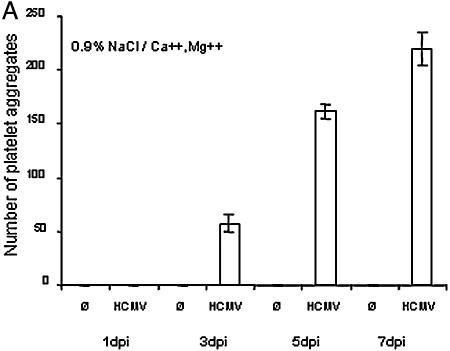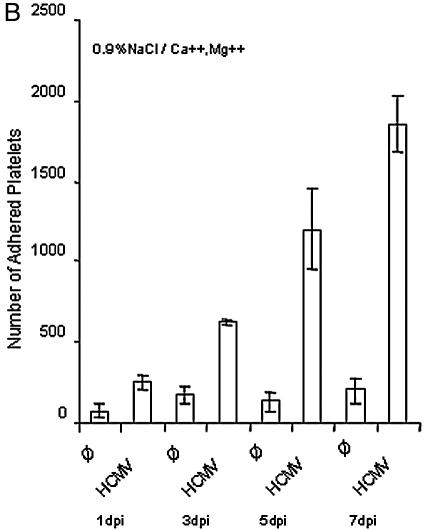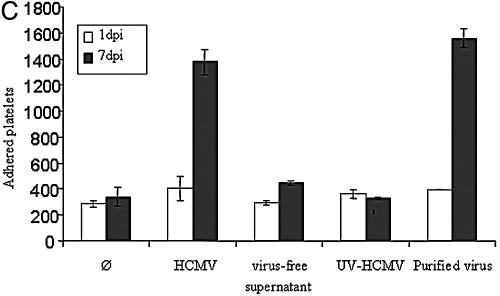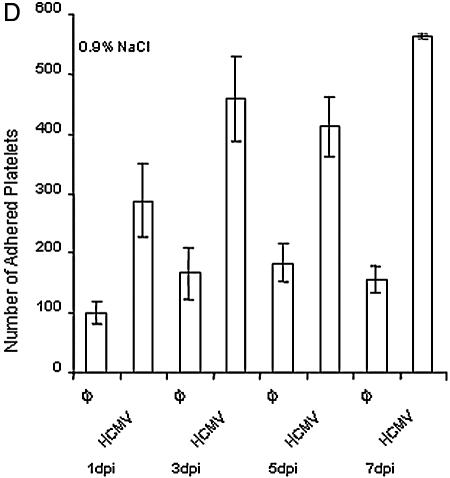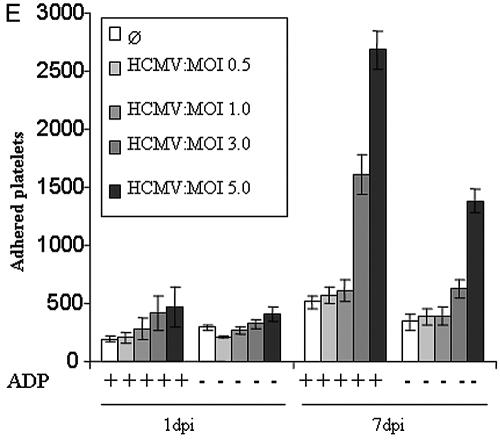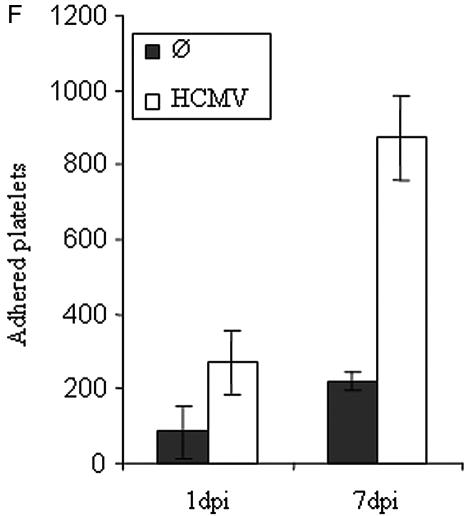FIG. 2.
Increasing platelet adherence and aggregation on HCMV-infected HPAEC with MOI and time after infection. Platelets were incubated with uninfected and HCMV (Towne)-infected HPAEC (1, 3, 5, and 7 dpi) in the presence of Ca2+ and Mg2+. Cells were fixed, and aggregates containing >10 platelets/cell were counted in five representative microscopic fields. No aggregates were seen in uninfected cultures. The number of platelet aggregates increased with increasing time of infection (A). Platelets were incubated with uninfected and HCMV (Towne)-infected HPAEC in the presence or absence of Ca2+ and Mg2+. Adherent platelets were counted after fixation. At least 100 HPAEC were examined in each sample. In the presence of Ca2+ and Mg2+, platelet adherence to infected cells was 8-fold greater than that to uninfected cells at 5 dpi and 10-fold greater at 7 dpi (B). No significant change in the number of adherent platelets was observed in cultures infected with UV-irradiated virus or virus-free supernatants compared to uninfected cultures (C). In the absence of CaCl2 and MgCl2, however, only a twofold increase was seen at 5 dpi and a fourfold increase was seen at 7 dpi (D). Furthermore, the number of adherent platelets in HCMV-infected cultures (at MOIs of 3 and 5) at 7 dpi was significantly higher with ADP preactivation than without it (E). The numbers of adherent platelets in cultures infected with GFP-tagged endothelial cell-tropic HCMV strain Toledo at 1 and 7 dpi were three and five times larger, respectively, than those in uninfected cultures (F). Data represent the mean ± SEM for six experiments.

